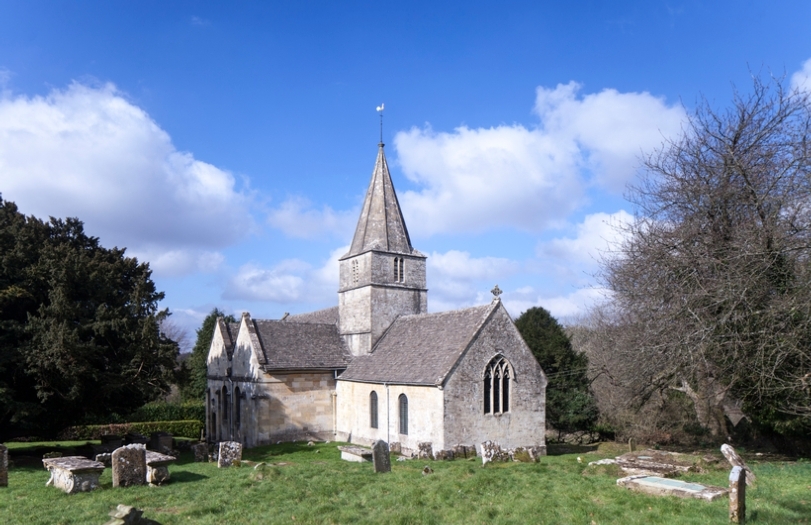Medieval Masterpiece Becomes our 350th Church
We are delighted to announce that St Kenelm’s Church near Cirencester in Gloucestershire is the 350th church to enter our collection.
The key to the historic church was officially passed to the trust in a service officiated by the Bishop of Gloucestershire on Wednesday 21 September.
Medieval St Kenelm’s is renowned for its extraordinary collection of ornate memorials dating from the 15th and 16th century and its unusual Jacobian carved woodwork. The churchyard is also the resting place of Ernest and Sidney Barnsley, leaders of the Arts and Crafts Movement.
The church lies in a picture-postcard location in the Cotswolds village of Sapperton. The Churches Conservation Trust will now work closely with local people to ensure the church is regularly open to visitors and continues as a social, educational and cultural space in the village.
We also plan to work with local partners to promote the church as a heritage site where visitors, holiday-makers and special interest groups can learn more about the building’s remarkable artistry and history.
St Kenelm’s remains consecrated and open for private worship but in accordance with Church of England rules will have only a limited number of services a year.
Crispin Truman, Chief Executive of the trust said:
‘‘We couldn’t be happier that the picturesque St Kenelm’s will be the 350th church to come into the ownership and care of The Churches Conservation Trust. We look forward to working with local residents to keep the church open for visitors and the community, as well as developing opportunities for tourism and learning.’
Simon Jenkins, Trustee of The Churches Conservation Trust added:
‘Churches have always played an important part in our social lives. As well as providing much needed community spaces, they also contain examples of some of the most beautiful art, architecture and craftsmanship we have in this country. By caring for churches like St Kenelm’s, The Churches Conservation Trust ensures they are conserved and protected for future generations to enjoy.’

